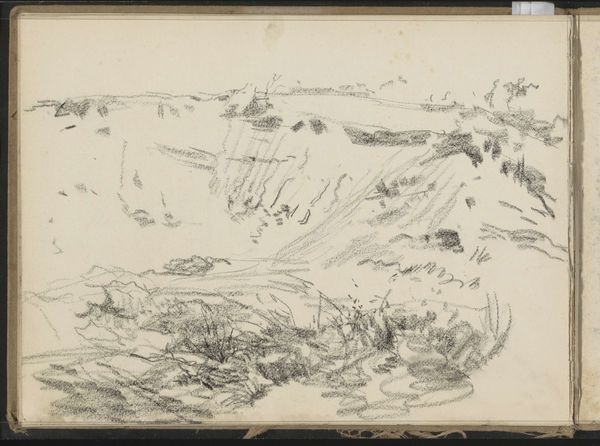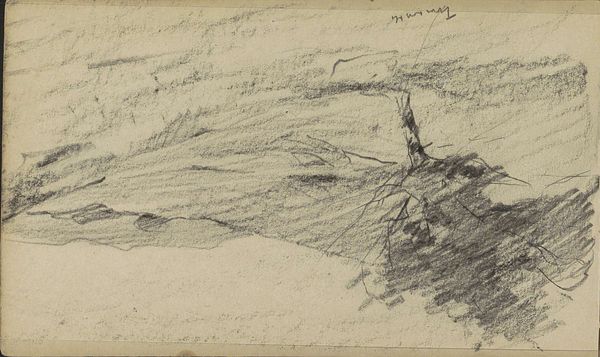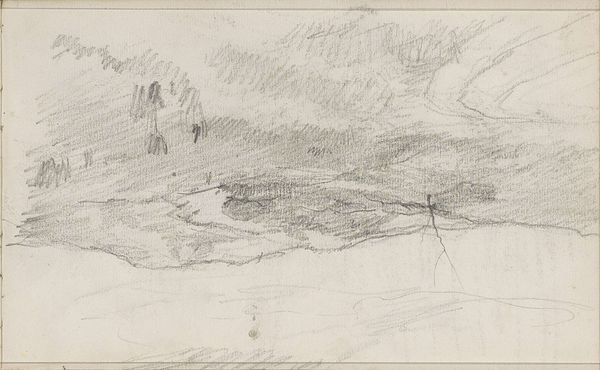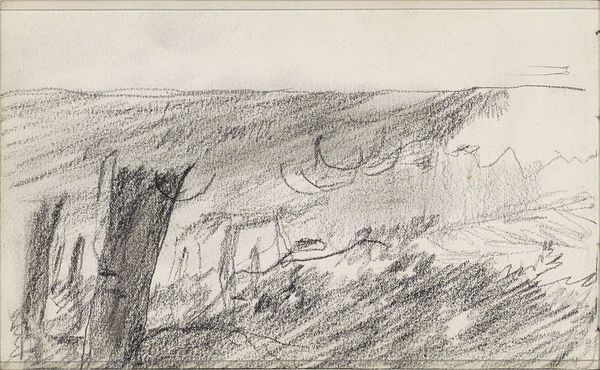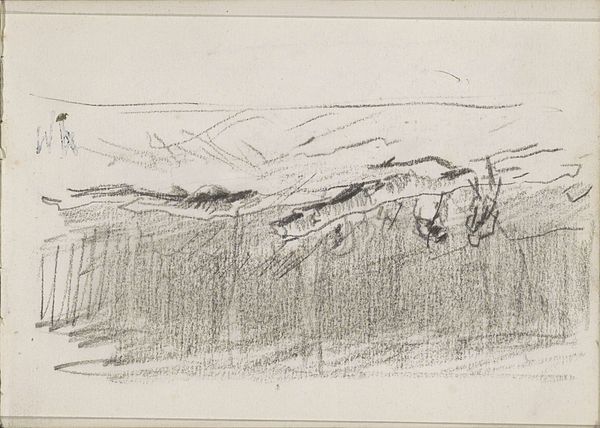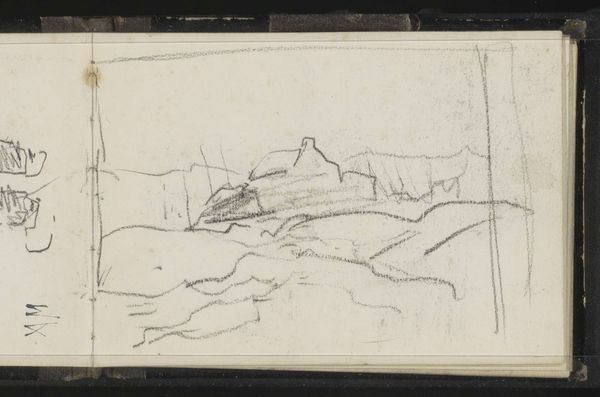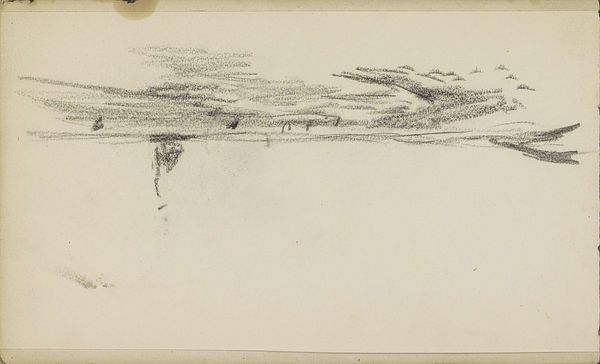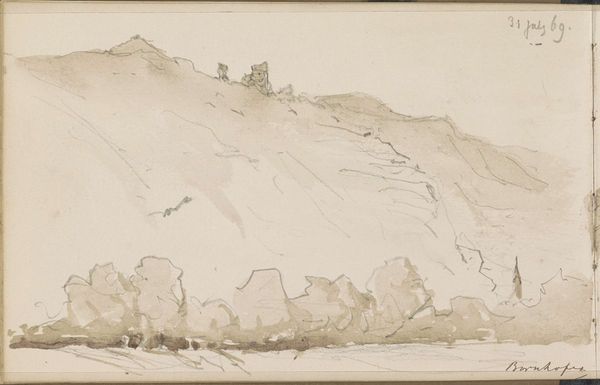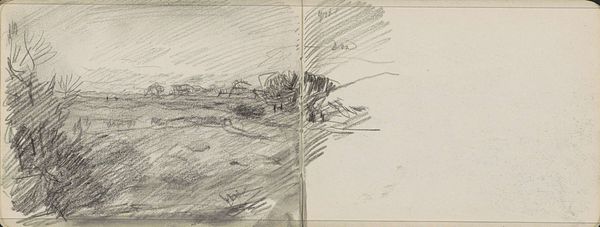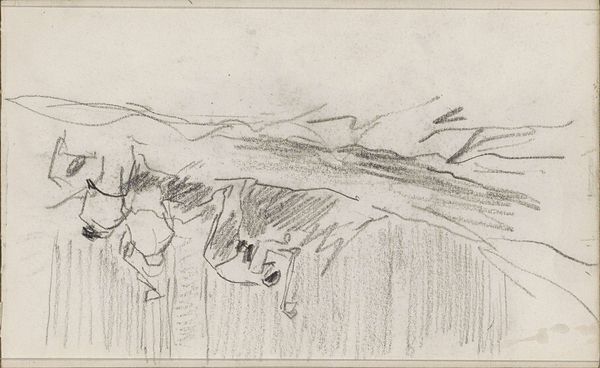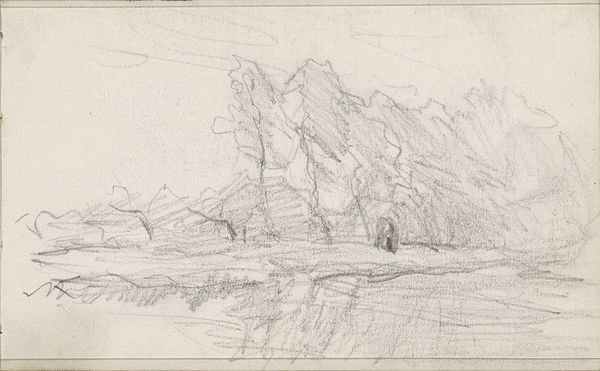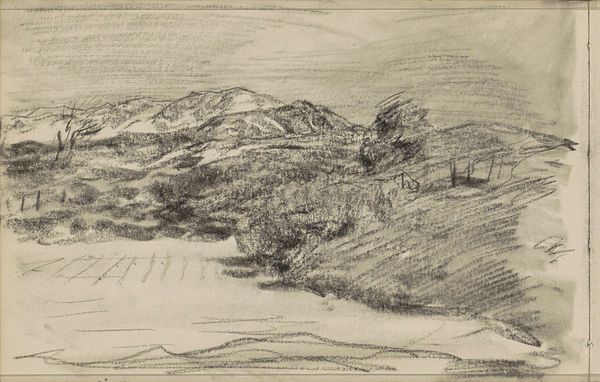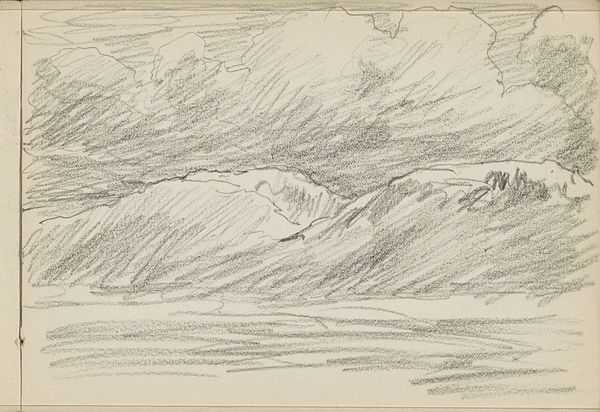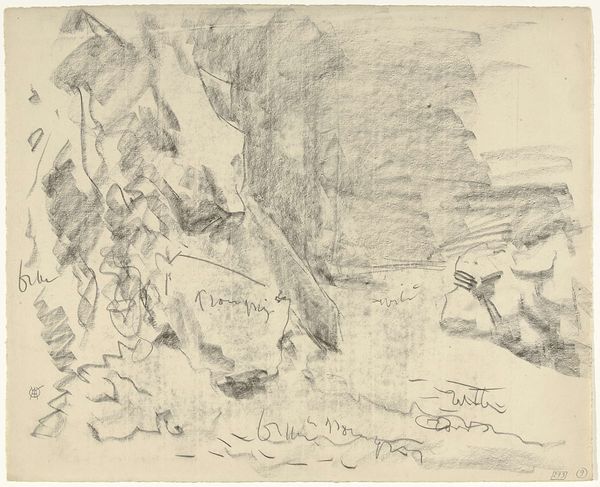
Bank bovenaan een heuvel, vermoedelijk in de duinen 1870 - 1931
0:00
0:00
drawing, pencil
#
drawing
#
pencil sketch
#
landscape
#
coloured pencil
#
pencil
#
realism
Copyright: Rijks Museum: Open Domain
Curator: This drawing, aptly named 'Bank bovenaan een heuvel, vermoedelijk in de duinen', or 'Bench on Top of a Hill, Probably in the Dunes', is attributed to Willem Bastiaan Tholen and likely dates from somewhere between 1870 and 1931. It's a pencil drawing with colored pencil highlights, currently held here at the Rijksmuseum. Editor: It has such a wistful quality. The bench seems so exposed up there, vulnerable to the elements. I’m also really drawn to the artist's quick, almost frantic application of pencil; a whirlwind of hatching that creates this texture within the hill or dunes that is almost visceral. Curator: Indeed, Tholen's landscapes often captured the Dutch countryside with an intimate understanding. He belonged to the Hague School, a group known for their realistic depictions of everyday life and landscapes in the Netherlands, away from purely academic and idealized representation. This sketch probably served as a preparatory study. He would develop it in the studio. Editor: And this simple composition is particularly effective. The horizon line is high, placing emphasis on the land. Then your eye rises from the thick base of shading, towards this light suggestion of atmosphere near the top edge. Curator: Exactly. You get a feel for the geography of leisure in late 19th, early 20th century Netherlands, public spaces but also that the bench itself stands out, doesn't invite much in the way of company. It hints at an expanding middle class seeking solace and recreation in nature, but with subtle questions about who has access, who is welcome. There are interesting politics involved when rendering imagery that involves nature or land, Editor: The symbolism of the bench is certainly poignant too – is it a place of rest, contemplation, or simply observation? The somewhat precarious position enhances the ambiguity of how the human and natural world interact. Curator: It is compelling. I wonder how its early audiences responded to these scenes. Perhaps they felt a similar mix of admiration for the Dutch landscape and critical evaluation. It could be that viewers enjoyed experiencing this intimate version of a Dutch rural place while considering society’s changing relation to its territory. Editor: A deceptively simple sketch that invites much reflection. The visual language is immediate yet the meaning seems infinite. Curator: I'll take that and muse over where Tholen himself saw that meaning.
Comments
No comments
Be the first to comment and join the conversation on the ultimate creative platform.
